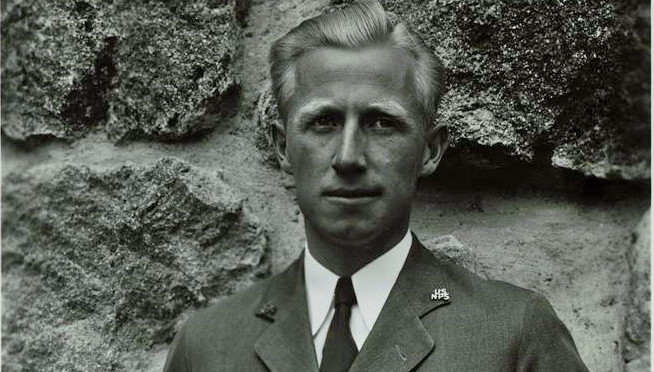Interview with Francis G. Lange
Chief Landscape Architect
Crater Lake National Park 1933-1940
By John Morrison, National Park Service Historian
Vacaville, California 8/8/87
I think it a great honor to be able to record what little information I have to give. But, my first experience with the Park Service occurred in 1922 when I got a job at Yellowstone National Park as a “pack rat” working at the Mammoth Lodge. That summer of 1922 created my first interest in the Park Service and the wonderful opportunity I saw ahead of me to become one to participate in this program. I continued my summer experience of 1923 I worked again at Yellowstone National Park. Then, that winter I decided to go to Yosemite and I went to Yosemite in 1924 and worked at Camp Curry as a night watchman. I had the pleasure of working for Mother Curry and Don Tresidder, her son-in-law. I enjoyed my summer experience and added to my desire to follow working for the Park Service. In 1925, the summer of ’25, I again worked at Yellowstone National Park, and I worked as a draftsman in the engineering department when the Regional Office was stationed at Yellowstone Park in that year of 1925. Then, in the summer of ’27 and ’28, after pursuing m work in landscape architecture and architecture at the Washington University in St. Louis I came west in 1929 and worked for an architect all of ’29 and the early spring of ’30 in the Los Angeles area. In 1930 I had the opportunity of being employed by Mr. Thomas Vint who at that time was the Chief Landscape Architect of the National Park Service located in San Francisco, California. I felt greatly honored at that time to take this position and I had the wonderful opportunity of working with a very talented man by the name of Merel Sager. Sager was a graduate of Harvard and he was very dedicated to landscape architecture and had much to offer in this wonderful experience and his loyalty to the profession. When we worked together in the early years there were other men in the Park Service. Bill Carnes came into the Park Service, as I recall, in about 1930 or ’31. I was stationed in the San Francisco office during that year of ’29 and ’30. Then in ’31 and ’32 I went back to St. Louis and got a Masters Degree in Landscape Design. That spring of ’33 Mr. Vint again offered me a position as landscape architect with the newly formed Civilian Conservation Corps. I came out to San Francisco in May 1933 and worked as a landscape architect. In that summer again I worked, with pleasure, for Merel Sager who had the residency positions of landscape architect for Crater Lake, Lassen, Sequoia, and a number of other national interest areas. That summer working with Sager we were able to embody and create plans for a number of the buildings at Crater Lake as well as at Lassen. But most of our concentration from the early ’30 was devoted to the major structures at Crater Lake National Park. Our approach to the landscape problem was to create everything in a natural environment as much as possible by the uses of materials, the skills of professional people we had, and the labor members that carried out these projects. We made plans for the ranger’s dormitory, the administration building, a number of the residences at headquarters. We also made drawings for the rim area; we made layout plans of landscaping for the sidewalks, parking areas. And we also, in the summer of ’33 started on a major landscape plan to develop the landscaping of the rim area between what is know as the cafeteria and the lodge area. At that time, or prior to our starting this work. This area was nothing but arid, volcanic soil which had constant erosion with no stabilization. It was Mr. Sager’s idea, and Tom Vint’s ideas to create a landscape plan to stabilize all this soil. And, as a consequence, when plans were made the work was performed by the CCC and the Public Works Administration. All the soil, the topsoil and the sods, and plant material were obtained from Munson Valley. Many truck loads of material over a period of 1933 t o1939 were devoted in hauling material to the rim area to landscape it. The major landscaping was done in about 1940 and much effort was given to landscaping surroundings of the existing lodge and as well as the cafeteria area and other building in that general vicinity.


